Video Menu
My Favorite Videos
My Favorite Videos
Learn What REALLY Matters Most for Effortless Power - Live Lesson
Sorry, you need to be a member to access this video.
You Are Just Seconds Away - Become a member here!
Already a member? Log in now

Want to learn how the pros swings look so slow, yet hit the ball so far? It's just one simple move that's missing in your swing! All you need to do to start hitting your longest shots is actually relax a certain muscle in your body!
So really, at the end of the day, you just have to get the hips working properly.
And if you understand what they're really trying to do, and maybe this will kind of help you visualize what you're really trying to do with the hips.
So imagine this was my pelvis, but I'm just tilting it looking at you this way, right?
So in the backswing, the hips move this way a little bit while they're turning, right?
So if I exaggerated all this stuff, I'm going this way, but I'm also turning.
So it looks like I'm not going anywhere.
That gets the right side loaded, but also what I was trying to get you to feel on the left side is, you know, that you're not just doing this, right?
And you're not just doing this.
You're trying to feel both sides loaded a little bit, engaged.
So once that pelvis shifts and turns to the right, then during the transition, it's shifting and turning back to the left.
So it's kind of doing this and this, this and this, but that's a little bit of an exaggeration, right?
That's really all that has to happen.
If that works, then early extension and all of that stuff goes away.
But when you're, you know, you've spent so much time going really, really slow, trying to get all these movements fine, fine tune.
But there has to be that transition where you start doing it fast and dynamically and athletically to start to get the feeling of what really happens.
Because if these muscles aren't engaged, you can do it slow.
But when you go to speed, it won't work.
So it's probably a little bit of that disconnect that I'm trying to kind of push you down that road to start going faster and faster.
So you start getting to be at the point where it's becoming more natural and athletic because really it's, it's nothing more than that.
Right.
And if you're doing that, then everything else falls into place.
It doesn't have a choice unless you're just overusing your arms.
So, so when I was trying to get you to feel that that was part of the reason it's just like, okay, obviously if I just completely disengage this, then I've got to be really patient during the transition to try and wake this thing up and then get it to work.
And it's just tough.
Right.
Whereas if you're going to move quick, this thing is just getting unweighted for a split second.
And then it's getting ready to go back the other way.
And in reality though, I, I mean, you drill or not, I still need some more weight on my left than what I was doing.
Correct.
What you showed in your faster swing, the non-slow one was fine, right?
In terms of like mechanics and in terms of, you know, how much you're shifting off and that type of stuff, as far as what you feel and what's really going to be loaded, that's what I'm trying to get to next is, you know, there's a difference, but like I can make it look like I maintained all my angles and positions, but this leg is asleep, right?
I, I'm most of my weight's hanging over here.
So for me to like magically wake that up in a 10th of a second, it's just not going to happen.
So, so that's really kind of what we're trying to get is to get that natural movement.
That's why I was kind of trying to get you to understand the hip movement is the pelvis is shifting, it's turning, and then it's shifting during the transition and turning.
And that's the whole key.
And if that works, then the upper body can then be, you know, follow along and be told what to do by the lower half.
Do that one more time.
Can you turn down the line and do it?
Okay.
So backswing looks good.
It's the downswing stuff, which, which honestly we've spent way more time on backswing stuff than we have on downswing.
So that's, this is okay.
Like the backswing stuff looks really, really good.
So we just need to now spend the time to dial in this next piece, which is where we were trying to head anyway.
So this is fine.
So setup looks fine.
Backswing is quite a bit of head movement there still.
You see that?
Yeah.
It's crazy.
So the cure for this, watch your left shoulder.
Yeah.
See how it's kind of shrugging up to your chin?
You're losing that spacing.
So here's what I want you to do one little thing with the shoulder going back and this will help this.
Okay.
And I'll do it more in a second, but when you're going back, I want you to start concentrating on your shoulder going down.
So you're going to feel that your shoulder plane gets a lot steeper, right?
As long as you're not tilting your shoulders, the shoulders are going to turn pretty steep.
And as you go steep with your shoulders, that helps your hip go back.
They're one in the same, right?
If you're loading up properly in the back swing, like we were talking about in that clamshell drill where the hips are going back a little bit, well, that increases, I mean, if I really exaggerate it, right, that increases my spine angle.
Now we're not going to go that far, but we just need subtle changes.
So instead of kind of doing this and your shoulder kind of going, this is a little left shoulder engagement that's causing it to hike up and push a little bit.
You're going to start concentrating on going down, which to you is going to feel at first like this.
But then once you get used to it, you're just going to see how this is getting you more coiled up.
Whereas this is actually lengthening a lot of muscles that we need to be engaged.
So that's just a little tweak on the backswing.
Otherwise it's great.
So a follow-up question, which I meant to ask you.
So on the top of my swing, as far as the access tilt goes right there on the top of my backswing, is that supposed to be equivalent to my axis tilt at setup?
Yeah, basically.
Okay.
So yeah, I definitely flatten out then.
Yeah.
You got a little bit more than we need there.
And it's just adding a little, it's not bad, right?
It's just a little bit of extra movement, but we can cut that in half.
Yeah.
Yeah.
Okay.
And this is a really powerful shift.
Ah, there's the problem.
What's that?
So this transition move looks beastly, man.
I mean, you got a lot of muscle loaded up there, right?
So that's really, I mean, your legs are working.
Yeah.
Watch what happens here.
You stop, start pushing off the right leg, and then watch your shoulders.
Yeah.
They're wide open, right?
So the only thing we need, this is why, this is where the early extension is coming from.
So when you do this drill, body only, no arms.
Every single time, you're here.
Not here.
Okay.
Because now what's happened is you do this awesome transition, get super burly loaded, and then you stop with the left.
And instead of using this left side to push the hip up and back, you then begin to push from the right leg, hip, and turn your shoulders.
Okay.
That's where the disconnect is.
So we've got moves one and two.
Back swing's great.
Post-up move is the problem.
So that's causing all of the issues.
Yeah.
And I'm definitely doing everything really hard.
Yeah.
And this is, I want to get this fast and quick, not super burly.
You could deadlift 300 pounds.
But we're getting there, right?
I mean, the movements are great.
You did a perfect job keeping the shoulders shut, but then you start to turn them.
Gotcha.
Okay.
And then you're still up on the toes there.
But it's just, it's move three.
That's it.
That's all it is.
I actually, because of that exaggeration on that post, I was swinging a seven iron in my garage and I hit the ceiling.
Because I think it just shot me up in the air.
Yeah.
That would make sense.
Okay.
So setup's looking better here.
Hips are much better.
I'm still thinking about that, but I definitely, yes, have less butt sticking out.
Yeah.
Way better.
You're a lot more balanced here.
I mean, you could come forward a tiny bit more with your hips.
Yeah.
To get just a little bit more shin lean, which will move your weight forward just a little bit more, put you a little bit more in the middle of the foot.
But we're really, it's way better, like way more natural here.
This is all great.
But yeah, you look, you're already stressing.
I can see it on your face.
Yeah.
So we just got, we're going to, we're going to learn to make this quick instead of thinking so much about power, but we're, we're, we're close.
This left knee could come forward a little bit more, and this will happen as your shoulder gets steeper instead of moving across.
And I'll explain that in just a second.
But this is, these are, these are fine tweaks, right?
I mean, you can, you can play great golf from right here.
And then as we start down, I mean, that's really, really good.
We just want to make it quick instead of so heavily loaded.
But then, yeah, right here, it's all shoulder turn.
That's all that's missing.
So this is actually great news.
We've got one thing we've got to do, which is the only thing we haven't really spent any time working on.
So, okay, so a couple little things on the backswing.
One, we talked about just getting steeper with your shoulders.
Obviously, look at that in the mirror.
But I promise you, you're going to feel like this once you start just being here.
You're going to feel like you're, you're leaning toward the target, okay?
So just watch it in the mirror.
You only need, you know, five, ten degrees of tilt.
That's it.
You start getting 15 or 20, and then we have a lot of shit going on.
So as far as the knee, you know, as the knee goes forward, this is helping the hips rotate, right?
If the knee goes forward, the hips pivot.
And there's obviously a balance point.
I don't want to be like this.
But at the same point, if I don't let that knee come forward, I'm not letting my hips turn and load as much as they could.
So letting that come forward, but also this will happen as your shoulders get steep.
As your shoulders get flat, it's pretty easy for my knee to not get out over my toe.
But as my shoulders get steeper, then I start loading more.
And then the bottom piece from that is just doing this and feeling light.
What I mean by light, this is, you have the movements down.
The backswing and transition are there.
But I want you to start to feel like, how could I do this fast?
And I want to feel light on my feet.
I want to feel quick, right?
Because the golf swing, power is one thing and speed is another.
And those don't necessarily mean a one-to-one translation.
What I want you to start to feel is speed, quick, lightness, right?
Not Mike Tyson, but Sugar Ray Leonard.
So we're going to start getting your feet moving lighter.
And that will help speed all this up and take down the muscular tension and all that.
And this is normal.
When you're going really slow, everybody wants to kind of exaggerate these feelings.
And they get really tight.
And it gets really tiring to do this stuff.
And we're going to start swinging that pendulum the other way to be really quick and light on our feet.
So then the bottom line is move three is the only piece that's really missing.
Yeah.
So once we're here and you transition, then you've got to keep your shoulders shut.
You don't do anything with them.
And this is where it broke down is that you then started trying to turn your chest through.
And that will kill everything that you did on all this great work going back.
So from here, here, shoulders are square, arms are square.
Because from right here, once you're posted up, the only thing that's going to keep you moving is the release of the club.
So that's going to be the big change.
And once you have that where you can get this quickly, then everything's going to be fine.
So your shoulders from down the line, steep, post, or transition and post, and then shut.
And you should be able to get here with even your shoulders a little bit closed.
That'll be the little bit of an exaggeration.
But that will help you feel how little your arms and shoulders do in the swing.
Because as you're starting to feel fast and light through your hips and fast and light through your feet, then what you want to do is translate that feeling to the club.
You know, right now, if you were, you know, if you had a club in your hand and you were hitting the ball with the way that you're coming through, turning your chest, you would feel really strong and powerful through the shot.
You would feel like you've got a lot of mass into the ball, but we don't need it.
We need speed.
And so what I want you to feel is that your hands are quick, that they're light, that they're fast, that your arms are light and fast.
But if this is turning through, then your arms have to tense up to keep holding onto the club.
And that's at the point where we want to release the club.
Does that make sense?
Yeah.
My shoulders opening up like that.
Is it because my shoulders are opening up or is it my right side pushing everything open?
You were turning your shoulders.
The right leg helped a little bit, but it wasn't that bad.
It's not like your left knee was like this, right?
It's pushing in a little bit, but it's more that the left side stopped posting up.
It was still kind of here.
And then you started taking it over with your chest and that's the bottom line.
It was all rib cage rotation.
And so when you start doing this right and you get to the point of hitting balls or even practicing with an impact bag, once you're posted up, like this leg is fully straight, you're going to swear you're going to hit it 30 yards right with your chest.
And that's going to be when you're like, okay, then I got it.
Because then all you have to do is let your arms release.
And once that happens, that's what straightens out the ball flight.
But you're going to feel a thousand degrees more closed than you're used to right now.
So let me see you try that with the transition move.
Let's take some of that tension out and feel lighter on our feet, lighter in our legs.
Oh, so first let me do the steeper.
Yeah.
Down with the left shoulder.
You probably feel like you're reverse pivoting, right?
Yeah.
Good.
That's what it's going to feel like.
It naturally brings my knee out too.
Yep.
Exactly.
There you go.
Perfect.
Okay.
And then here, here, and then here, basically.
See, even there, your left shoulder is popping up a little bit.
Popping up.
Yep.
Don't move it at all.
Here.
Good.
Here.
Nailed it.
Let me show it to you real quick.
So I want, I want you to keep this and burn this in your brain.
So here's first.
So you still have tilt.
Yeah.
Right.
So that's perfect.
But that feels like a reverse pivot.
But you saw, as you got your shoulders, see how your left shoulder is not smashing up against your chin now?
And your left knee came forward.
You look perfect.
That's as good as it gets.
That's a stacked centered turn.
And then let me just watch your head here.
So you can use that leaf in the background.
So you still moved off inch and a half, right?
But it's not four.
Yeah.
So this is perfect.
That's exactly what we want.
Now let's look at the downswing.
So now you see how your shoulders, that, that, that, amount of tilt in your shoulders right now is fine.
Once you have your hands on the club, it's going to get steeper, but you don't want to try and make them steeper.
And that's what you did before.
I'll show you just real quick.
The first one that you did.
There.
Gotcha.
Yeah, yeah, yeah.
Right.
So now you said you felt something in the left hip.
Not bad.
I mean, it could just be a little tight.
It's 7.
30 a.
m.
Yeah.
So it looks like you're, you're snapping it back pretty hard right there.
That looks pretty tight.
So that looks like you're probably overdoing that just a smidge.
You can just relax that.
Now, again, keep in mind what we're trying to do here.
This is going to be where you're starting to feel the difference when you do something at pace and you do something with the right amount of tension, the healthy amount of tension.
It's not trying to force this hip back, which is what it looked like there.
This actually hurts my hip.
It's posting up and I'm there and I'm out of it.
And this is where, again, that little hop off the, off the ankle, not off the toe helps because that helps open you up a little bit.
Like when you're adding, when you're doing this really, really fast, right?
Like with a driver and you're really getting those hips to go through, this opens up that hip a little bit.
So it takes the strength because you're, you know, there's only so much internal rotation you're going to have on this hip socket before it's like, Hey, I'm at max range of motion.
Right.
And that's why you see these guys who are really trying to turn their hips fast, like tiger and Bubba and Phil and those guys.
That's why you see this, but it's, again, it's this, not this.
Right.
So I'm just trying to hop my hip back to take some of that strain off the hip, even letting the foot pivot.
Right.
As long as I'm back on my ankle, the foot will naturally pivot and that will free up.
So my hip doesn't feel like it's so locked in there, but that's all that was happening there.
You're just really forcing this thing back too much.
Just relax, make a little bit more neutral and natural.
There you go.
Plenty.
Yep.
When you're transitioning, get more weight over to the left.
More with the hip.
So you're doing it.
You have a tendency when you're back to do this a little bit, just getting that external rotation without the hip coming over with it.
The knee movement leading is tiny, but you got to get more of the hip over there.
There you go.
Good.
Remember, we're trying to just load that hip up, right?
So we've got to get weight over there.
We can't just move the knee by itself.
You don't even need to get your hips that open.
That's really open.
I mean, it's fine when you're doing it at speed, but you don't need to practice it at that slow of a pace.
There you go.
Good.
Your shoulders are getting a little steep and open there.
You're activating them.
You feel it?
Yeah.
Steep and open.
So keep your chest pointing away from the target all the way into impact.
There you go.
So, and then your shoulders, if you think about it this way, right?
If your shoulders, during the backswing, you have, let's just say you have a 45 degree differential.
Your shoulders have turned 45 more than your hips, right?
And let's just say that you maintain that, and during the transition, it's still 45, and at impact, that stays the same, right?
If you move your shoulders at all, you will end up open, right?
Because you're getting your hips about to 45 degrees open.
So that's the key to understand is that once you're here, they literally don't have to do a thing.
And that's where you're going to get that real effortless speed.
But you're going to, when you start trying to move this at all, then that's when the golf swing feels like a lot of work.
A little open.
Turn down the line for me.
One more time.
I'm going to record this one.
Go ahead.
Pretty close there.
Back swing looks good.
Left knee is out a little bit further towards the end of the shoe.
Shoulders a little steeper.
But here, shoulders are starting to open a little bit.
And this is where being really relaxed is going to make a big difference.
And I'll explain that in a minute.
Right now, I'd say your shoulders are probably 30 degrees closed.
So we've lost some of that differential.
And then they get a little tiny bit open.
Not bad.
The hip movement is spot on, dude.
So good.
Posture looks good.
Let me just check a couple things.
You could move the hip back slightly more.
Actually, I think your hip is probably fine there.
You're losing the tush line a tiny bit.
But it goes back to setup.
Set up again.
Okay.
Just letting the hips come forward like an inch will have everything dialed in on the money.
But what I want you to start to feel is that I want you to start monitoring the tension that you have through the sides here, in your obliques and your rib cage.
Because if they're tight, then you won't get any dynamic stretching.
And you want to start to feel as kind of an exaggeration as you loosen up and feel more relaxed.
See how my shoulders are like still kind of going back and then my hips are going the other way.
I can't do that if I'm tight.
I can't do that if I'm really rigid and trying to force all this stuff into position.
But as I relax and get everything softened up, now it's very easy for my shoulders to be closed here.
And that's going to be the next key is doing this stuff because you've got it.
The technique is there.
It's now making it fluid and relaxed, so that you get these dynamic stretching motions and feeling that your shoulders are not stuck together with your hips.
That's a lot better.
Even more so.
Try to feel like your shoulders are.
Yeah, that was good.
Do it again.
Better.
Getting there.
All right.
Quick look.
What did that feel like to you?
It feels good.
I have to just, if I think about not moving my shoulders, I can do it right now.
I just need to get in the mirror now and have that be the thing.
I am hitting my left hip pretty hard because I used to have to do that.
But it sounds like I'm overdoing it a little bit sometimes.
Yeah.
So now what we're starting to see is a little bit of the dynamics that's critical to the golf swing in that transition.
Where ideally, we're a little bit late here.
And what I mean by that is see how the hips are starting to shift back to the left and the shoulders are still closed?
To get this right, the shoulders are still actually turning back while that weight shift is happening back to the left.
But this is the first step.
When you start doing this for the first time, it feels super disjointed and out of control for most golfers.
And then as you start getting to do it more relaxed and more comfortably, then it starts to happen really athletically.
But this is the first step is that you go to the top and you kind of stop and then you do the transition and, you know, the shoulders are still, they're static, right?
We want them to still technically be turning back.
Yeah.
But now you can see how they're shut and you're making this beautiful transition.
And as you get into the post-up, you're hanging back there a little bit, but we're almost there.
You just need to get more weight over there.
Through the hip, not the knee.
Exactly.
Exactly.
Well, you know, now watch your head, right?
So now we lost the focus on that.
So now watch your head's going to shift off the ball.
Yeah.
See that?
Yeah.
So that's why it's hard to feel that weight over there.
We just have, now we have way too much axis tilt.
Okay.
But what we're really concerned about, that's the easy part to fix is just getting those shoulders, that shoulder steeper.
But what I'm really interested now is the actual dynamic.
So naturally, once I start going fast, my shoulders will keep going back.
My hip will start opening up.
But I want you to practice it while you're doing this drill.
Yeah.
While you're doing without the arms and the club.
Because then once you do it with the arms and club, then you get a really big stretch.
Because your arms and club are still pulling you back.
Right?
You've got all this momentum.
And then your hips are going the other way.
And then it becomes a lot.
That's so much better.
Okay.
You can see now that your shoulders are chilled out and the hips are going.
And now all we need to do, we've got to keep the head movement minimized.
But the next key, and this is, quite frankly, this is the part of the golf swing that most amateurs never, ever get.
One, because they don't, their backswings are so bad.
They're in such a weird position.
They can't feel how to not use their shoulders.
They never get to the good stuff where they're learning how to use their hips dynamically while everything is still going back.
Just like if you're throwing a ball, this becomes natural for your arm to go back while your hips are going forward.
But you have to be loose.
You can't be all stuck together.
Right?
And that's what I want you to start to feel.
So your left shoulder is going down and your hips are going, they're ahead of everything.
And that's, it's going to be, It'll be a brain challenge at first, because you've spent so much time stacking these things in building blocks like this, where there's no dynamics in there.
And now it's going to feel like, okay, I got to kind of let go of some tension and some, what you associate with control to start letting everything happen at a true pace.
And that's going to be, that's the game changer.
Now, once you have that, you've got the mechanics, you've got the positions.
Now it's letting it happen fluidly and athletically and quickly.
And now once you have that, then once you stack the arms back in there, then it all goes together.
And that's when you get this speed that you're looking for.
So, so minimize the head movement with the shoulders getting a little steeper, just like we, and the video that you have on this, you'd review this because it's spot on, right?
Your head's spot on, your axis tilt spot on.
And now it's that dynamic transition.
So you can practice kind of going back while getting your hips to go first.
I'm exaggerating a little bit, but that's what you kind of want to do.
And like I said, you're going to feel a little disjointed at first because you're going to swing the pendulum over here and try to be like, try to make it really goofy.
It's, it's not that big of a move.
It's pretty subtle, but the key again is minimizing tension, especially in your obliques.
If these are softer, then those hips can begin to shift and move independent.
But if they're tight, then it's going to drag your shoulders right along with them.
And then once you have this tension here, you're going to then want to engage it and fire your shoulders through as well.
Okay.
Does it make sense?
With no exaggeration, this is the differentiator, quite frankly.
I mean, this is the differentiator between a really good six handicap ball striker, eight handicap ball striker, and a scratch ball striker in terms of distance and control and accuracy.
Because once the shoulders chill out, you're taking these pivot points that you have like references for the swing in terms of, you know, this is a pivot point.
This is a pivot point.
You know, your, your rib cage, all of this stuff that's reference points for where you're going to hit the ball and you're, you're no longer trying to actively move them.
And once that happens, now you have control over the strike.
This is like, you know, that, that I talked about that fulcrum video and, and, you know, how the left shoulder is moving away and people hitting it off the toe and things like that.
It's just because this stuff is active.
It's actively moving.
Once you learn to replace it with proper hip movement and the hips are what are actively moving the shoulders and the shoulders chill out, then everything unfolds.
And that's really the key.
But this is, this is the, the hardest part for people to get right because it feels unnatural to do it, you know, in a golf swing for most people because we're so fixated on the club, which is attached to our arms and shoulders.
Right.
So just doing little things to help you kind of get fluid with it and flowing with it more is going to be key.
And it's just going to be all coming from your hips and chilling this out.
You can do this, what we just did with your arms and club in quite frankly, the rest of the stuff doesn't matter.
You can be a little bit off at the top.
Your arms can be a little bit off plane.
They can be a little too shallow.
They can be a little too steep.
It doesn't matter.
I mean, obviously that stuff matters when it comes to fine tuning.
Right.
But it matters less.
What really matters the most in the swing is the power source.
That's it.
Whatever the engine is, right?
If your engine is on top, then all of this stuff is out of whack.
And then you have to then start moving these pivot points that you use for striking the ball.
If your shoulder is here to dress and here at impact, there's a problem.
And so you start trying to control that stuff.
What you're really going to feel is once you're posted up here and because there's no active motion in your shoulders, you feel like you're super static.
And then it's just that to hit the ball.
I mean, there's nothing.
You're sitting still.
You've just had something else accelerate everything.
Once everything's locked in place, it's like shooting fish in a barrel.
You don't have to hope that you make solid contact.
It's a foregone conclusion.
You've just moved into these impact positions, these impact alignments with the right parts of your body.
But then everything slams on the brakes more or less when you post up.
And so now instead of these things, you're trying to compensate for these things by doing something with your arms and hands.
That stuff all goes away.
But the mental crux is then feeling like trusting is what it comes down to.
Trusting that you don't have to use your arms and hands and shoulders.
And if you can get there, then the faster that you get to that point where your hips are the power source and your arms and hands aren't doing anything, then if you can make that mental switch, that jump, the swing is there.
This really is the swing.
The rest of it you can cheat and get away with.
But this part you can't.











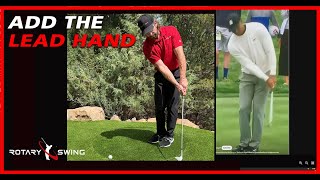


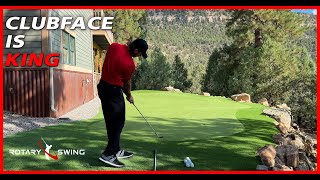








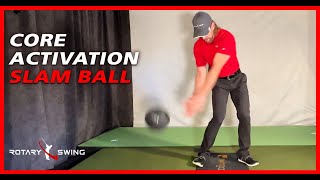





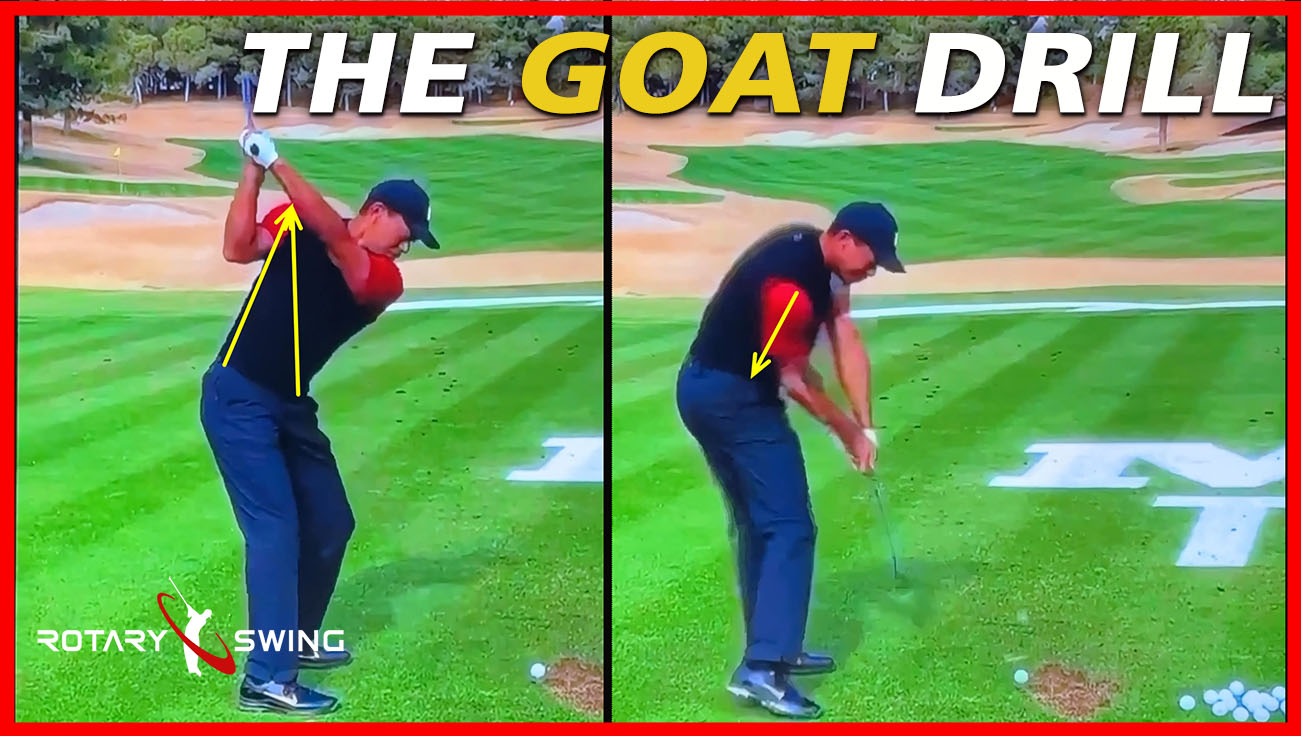


















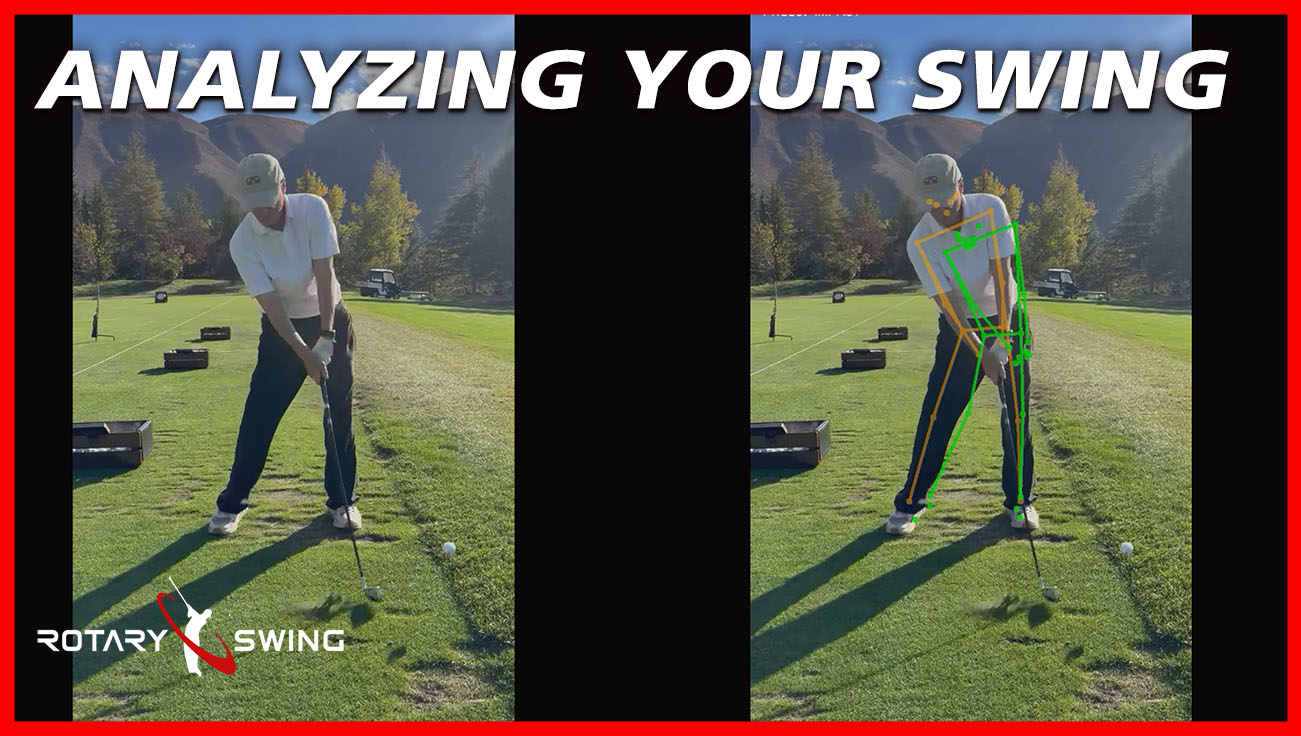









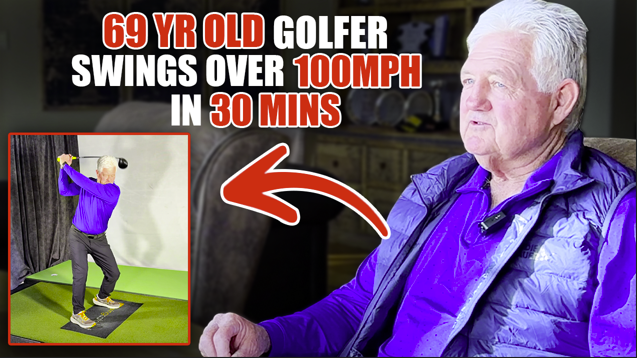
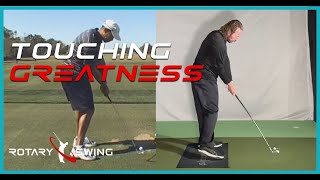

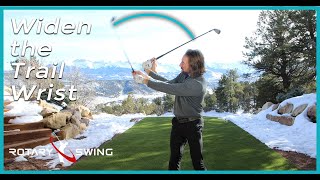



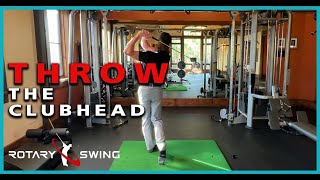







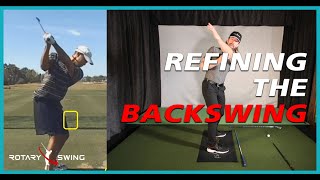







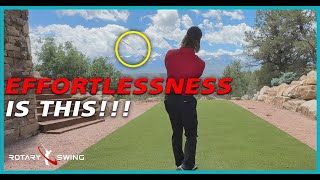
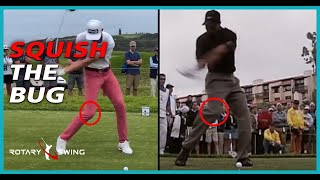
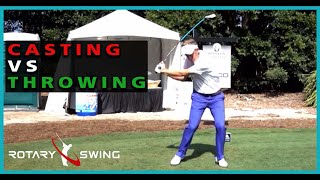



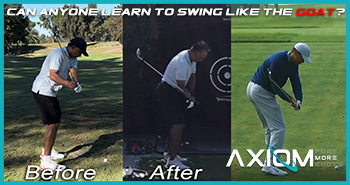


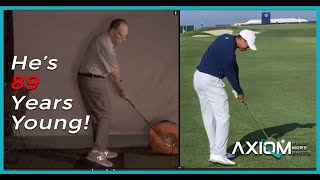



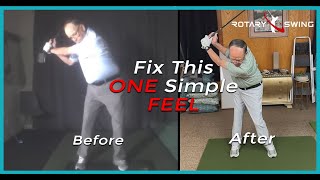











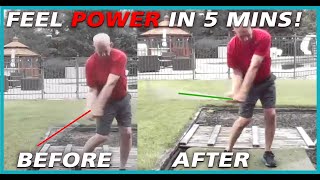


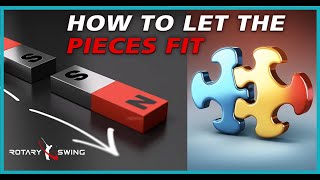






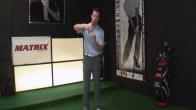













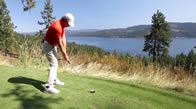



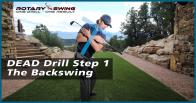

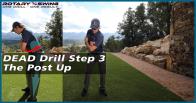










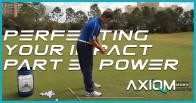











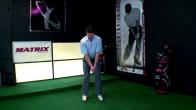



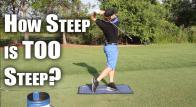


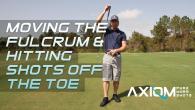



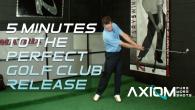

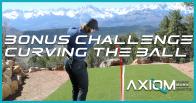






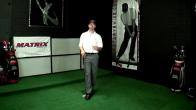









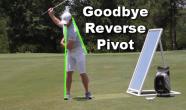





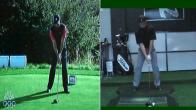



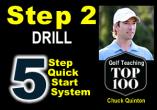






















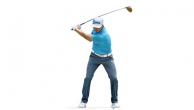

































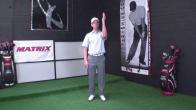




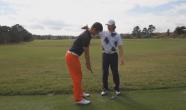





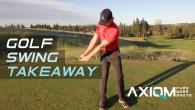









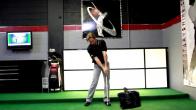



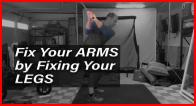


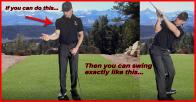




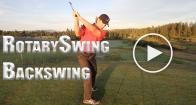

















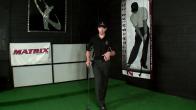






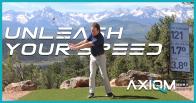
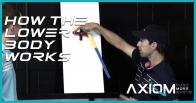












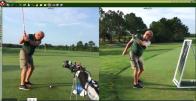






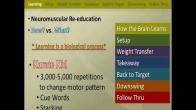
















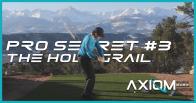

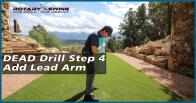


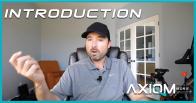

















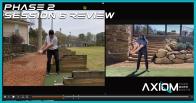







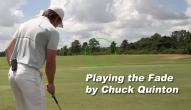











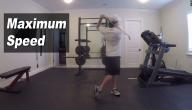

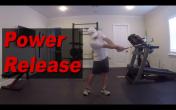
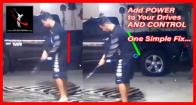

















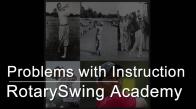



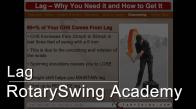



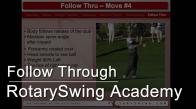






















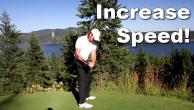



















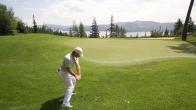





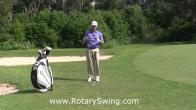











Bill
Craig (Certified RST Instructor)
Rebecca
Craig (Certified RST Instructor)
Rebecca
Craig (Certified RST Instructor)
Dick
Craig (Certified RST Instructor)
Will
Craig (Certified RST Instructor)
Paul
Craig (Certified RST Instructor)
Tony
Craig (Certified RST Instructor)
Kevin
Craig (Certified RST Instructor)
Roy
Bill
Roy
Kenneth
Michael (Certified RST Instructor)
Tom
Chuck
Pete
Michael (Certified RST Instructor)
Arthur
Harold
Anthony (Certified RST Instructor)
Michael (Certified RST Instructor)